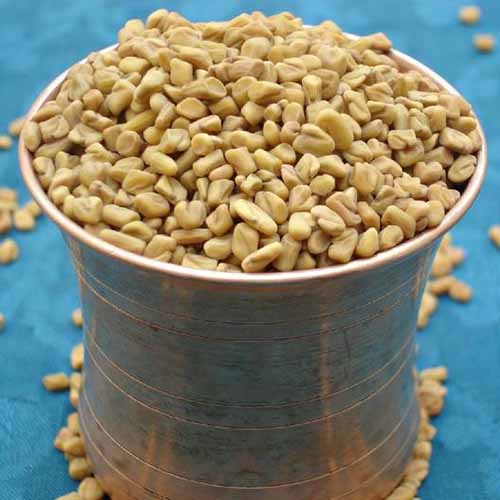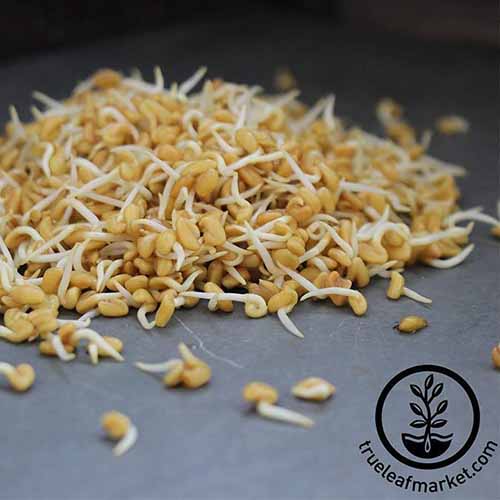Trigonella foenum-graecum
Looking for a new, versatile crop to enjoy? Why not try your hand at growing fenugreek?
Not only does this herb make an attractive addition to the garden, its medicinal value, soil building properties, and enticing flavor and aroma make this easy-to-grow annual one you dont want to miss out on!

Heres whats to come in this article:
What Youll Learn
Lets dig in!
What Is Fenugreek?
Fenugreek is a tender annual that is a member of the legume family.
This plant can grow up to two feet in height from a single hollow hairy stem, with stems that branch at the base. The leaves are small with three ovate green to purple leaflets each and solitary white, yellow, or purple flowers that grow from the leaf axils.
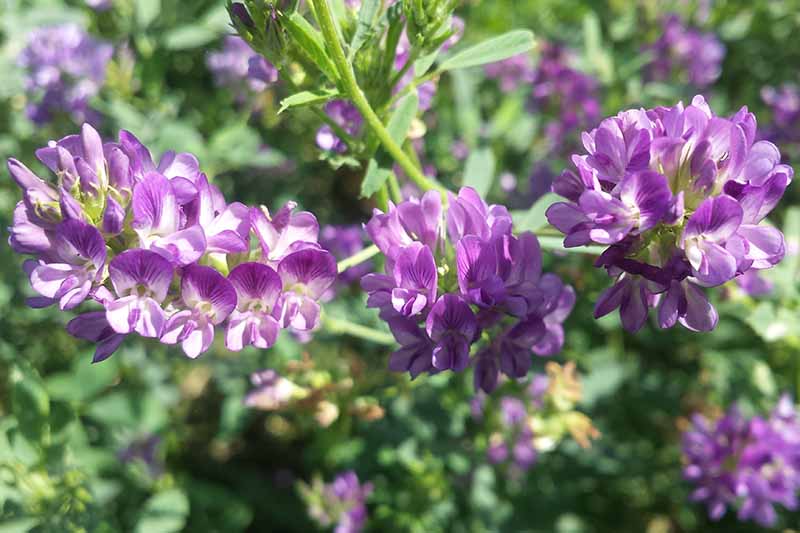
The leaves look similar to clover leaves and the flowers resemble those of common peas. The aromatic yellowish brown seeds develop in curved yellow pods.
Both the seeds and the leaves are edible.
In addition to its culinary applications, this plant also has a long history of medicinal use, as well as use in animal feed and as a soil building cover crop.
Cultivation and History
Cultivated worldwide, both the seeds and the leaves are used in cooking, most commonly in south and central Asian cuisine. Also known as methi, you will often taste its maple syrup like flavor in curry, dal, pickles, and spice mixes.
This herb is thought to have been first cultivated in the near East, India and North Africa.
One thing is certain: it has been used by humans for a very long time. Archaeological remains of charred and desiccated seeds discovered in Iraq have been carbon dated back 6000 years!
In ancient Egypt, fenugreek was used in cooking as well as medicinally to reduce fevers, and as an incense for religious ceremonies. It has also been a part of Indian cuisine for 3,000 years.
It was later used in Ancient Greece and by the Romans often as oxen fodder, to treat a variety of ailments, to make yellow dyes for coloring wool, and as a flavoring for wine.
Benefits to the Garden
Like other legumes, fenugreek is a useful cover crop to fix nitrogen in the soil, a critical nutrient for plant growth.

Nitrogen-fixing plants form a symbiotic relationship with certain types of bacteria in the soil that colonize on the roots. In order for fenugreek to fix nitrogen, it needs one particular bacterium, Rhizobium meliloti.
The bacteria extract nitrogen from the air and convert it into a usable form that becomes available in the soil for uptake by plants.
You can tell if a plant is fixing nitrogen by digging it up and examining the roots for pink colored nodules.
Plants that are fixing nitrogen are able to grow lush and green even in low quality soil, while those that do not may produce smaller, less colorful foliage. These nitrogen-fixers improve the quality of the soil for other plants by the addition of this important mineral.
This quick growing annual is also useful as a ground cover under slow growing crops. It will cover the soil before you know it, thwarting weeds, building nutrients, and regulating soil moisture.
Medicine
This herb has therapeutic roots in many traditions, and has been studied extensively in recent years for its effectiveness as an herbal medicine.
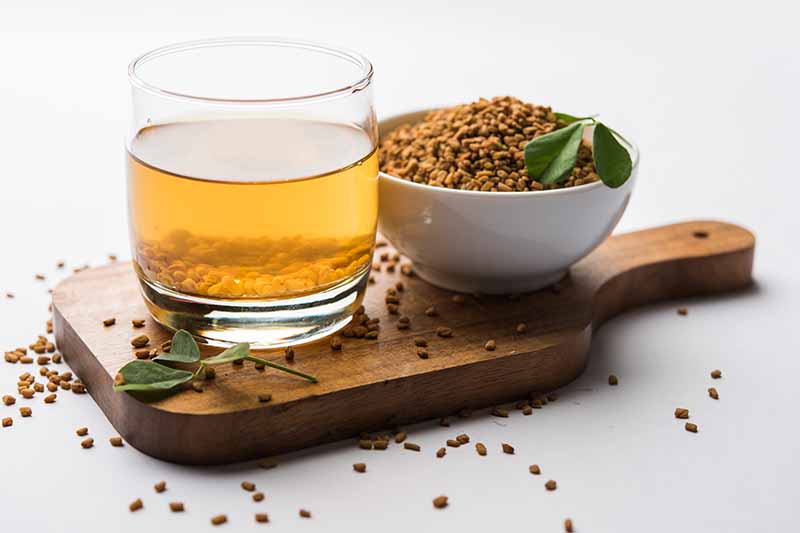
Used for centuries to increase breast milk production in lactating mothers, it contains high amounts of the phytosteroid diosgenin, a known galactogogue.
It has also been used to ease menstrual pain and induce labor. Fenugreek contains phytoestrogens, chemical compounds that mimic estrogen and bind to estrogen receptor sites in the body.
According to Maria Noel Groves in her book Body into Balance: An Herbal Guide to Holistic Self-Care, available on Amazon,herbs that contain phytoestrogens are sometimes recommended by herbalists and medical practitioners to support bone health, improve perimenopause symptoms, and reduce the risk of estrogen-dependent cancers.

Body into Balance: An Herbal Guide to Holistic Self-Care
In males, it has been used to boost testosterone and sperm count. One clinical study of 50 male participants taking extract of fenugreek seeds for 12 weeks found an increased sperm count, as well as an improvement in mental alertness, libido, and mood.
However, this was a very small study, and conflicting research on the topic exists, so findings in this area remain inconclusive.
Research into its potential benefits for those with diabetes is also ongoing. Certain compounds in fenugreek may potentially reduce intestinal glucose absorption, improving insulin sensitivity, delaying gastric emptying, and reducing concentrations of lipid-binding proteins.
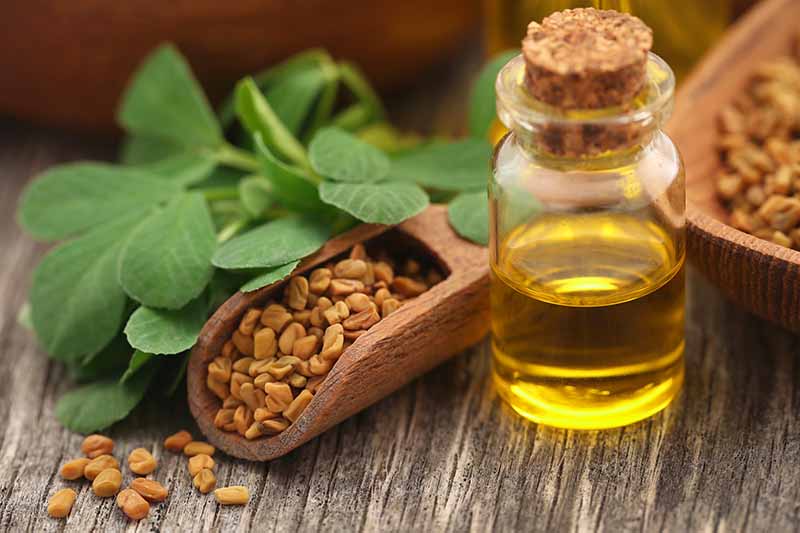
This is perhaps because the herb is rich in dietary fiber, but you would have to consume quite a bit to see a noticeable effect related to fiber intake!
Several studies have also shown effectiveness for improving metabolic symptoms associated with both type 1 and type 2 diabetes.
While fenugreek has many potential health benefits, it is important to always consult a medical professional before starting any herbal medicine regimen.
Use of this herb should be avoided when pregnant, as it has the potential to stimulate uterine contractions.
Propagation
This annual does not transplant well and should instead be sown from seed.
Seeds should be sown in the garden after all chance of frost has passed and the soil has started to warm, any time from late spring to late summer.
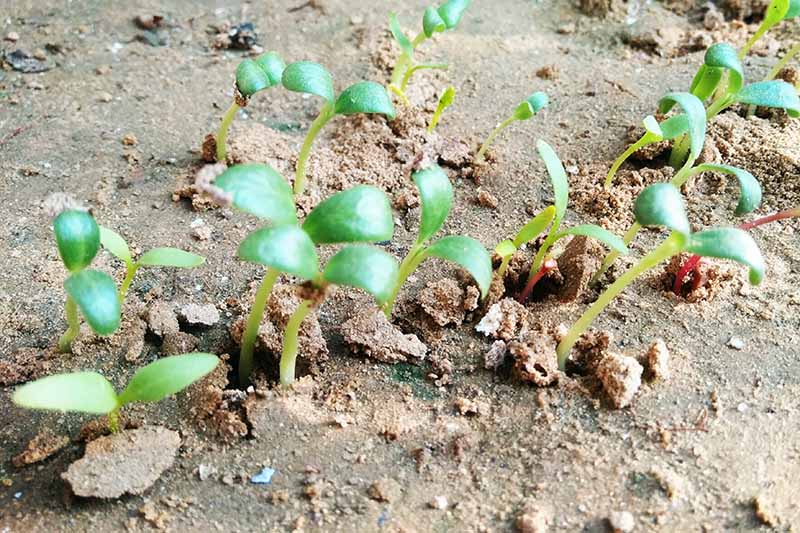
If youre growing fenugreek for its seeds, plant in the spring or early summer so it has time to produce adequate seed pods before the growing season ends.
If using it solely for its fast growing leaves, sowing any time between spring and late summer is fine.
Seeds can be broadcasted or planted in rows 8-18 inches apart at just 1/4 deep. They should sprout quickly, poking through the soil in just a few days. Water regularly to keep the soil moist, but do not over water, as this plant wont grow in waterlogged soil.
How to Grow
Fenugreek will do just fine planted in average, well draining soil, though it prefers neutral to slightly alkaline soil, with a pH range of about 6.5 to 8.2. Due to its nitrogen fixing properties, planting fenugreek in poor soils will help to improve the nutrient quality for future crops.
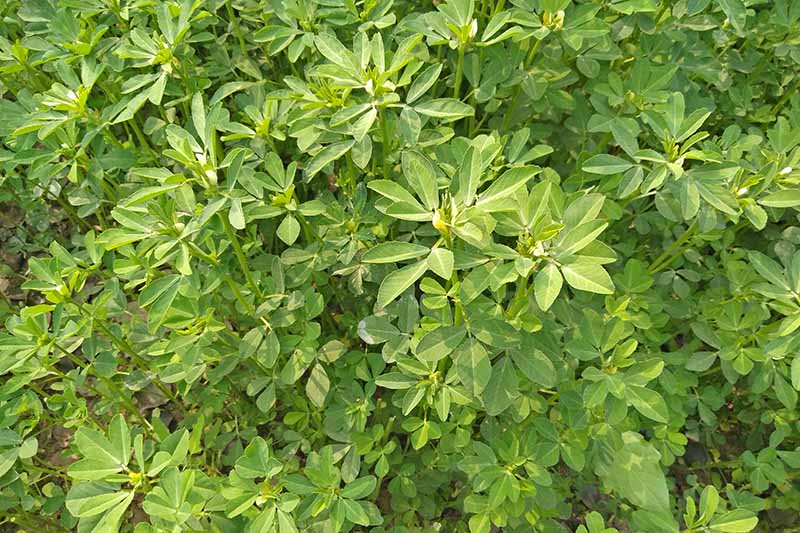
There is no need to add fertilizer, but it is always a good idea to incorporate rotted manure or compost into the soil before sowing. If you wish, you can use a liquid compost tea or comfrey tea every few weeks to encourage more robust growth.
Fenugreek requires at least 4-5 hours of direct sun a day, and can tolerate afternoon shade. While it may be planted in partial shade in warm climates, in colder locations, it is best to grow it in a sunny spot.
This plant does particularly well in warm and hot climates with average temperatures of 50-90F, and it can even be grown year-round in USDA Hardiness Zones 9-11.
Once established, thin seedlings to two inches apart.
Water your crop regularly to keep it moist, particularly in dry weather. Do not overwater, as waterlogged soil will impede growth.
Pinch off the top third of mature stems periodically to encourage lush, branching growth. If youre not planning to collect the seeds, prune the top 6 inches of the mature plant to encourage more growth and prevent it from setting seed.
Container Growing
This herb can easily be grown in containers. Plant seeds in a pot indoors on a sunny windowsill, or place pots on the balcony or in a patio garden.
Fenugreek is a shallow rooted plant, so you dont need a deep container. Use a wide planter around 6-8 inches deep with good drainage.
Fill the container with 2/3 potting mix and 1/3 compost. Sprinkle seeds in the pot and add a thin 1/4-inch layer of soil to cover. Thin to 1-2 inches of space between seedlings.
Growing Tips
- Sow seeds directly fenugreek doesnt like being transplanted
- Keep soil moist but not waterlogged
- Plant in a sunny spot or indoors in containers
Where to Buy
Though various cultivars are in development for agriculture use and for growth as a cover and forage crop, youll typically find only one type of fenugreek seed at the nursery.
Packets of Trigonella foenum-graecum seed available in a variety of sizes from Eden Brothers. Grow them for the leaves and seeds, for both culinary and medicinal use.
Are sprouts more your thing?
A bit bitter on their own, fenugreek sprouts taste great mixed with other types of sprouts. Large-volume packages of sprouting seeds in a variety of sizes are available from True Leaf Market.
Managing Pests and Disease
In the home garden, fenugreek isnt especially prone to pests and diseases, but there are a few you need to watch out for.
Insects
Insects dont pose much of a problem, except for one particular creepy-crawly.
Aphids
These small sap-sucking pests feed on the juices of the tender parts of the plant, negatively affecting growth. Plants may also become contaminated by the honeydew, a substance produced by the aphids. For more information about aphids see our guide here.
Try using neem oil or homemade insecticidal soap to combat infestations.
Disease
Particularly in warm or humid conditions, if your plants arent thriving it could be as a result of disease.
Root Rot
This fungus causes yellowing of lower leaves, wilting, and stunted growth. Plants that succumb to root rot will eventually die.
If you suspect root rot, pull up a plant and examine the roots to see whether they look rotten. Planting in well drained and sufficiently warm soil will reduce the risk of rot.
Powdery Mildew
Mildew often affects this crop during the later stages of life, when foliage is dry and the weather is warm. Look for white powdery spots on the lower and upper surfaces of leaves, flowers, and other parts.
Apply neem oil to combat mildew.
Charcoal Rot
This fungus causes discoloration and cankers on the stems of plants that may spread upward, causing the leaves to wilt and drop. It thrives during the hot, dry part of the growing season and often affects plants that under heat stress.
Adequate thinning and weeding of plants, incorporating aged manure into beds prior to planting, mulching to maintain moisture, and regular watering during periods of dry weather will help keep stress to a minimum, and reduce the risk of this disease.
Harvesting
This fast-growing annual will produce leaves that are ready to harvest within just 20-30 days of sowing.
Trim the leaves carefully, snipping off the top third of mature stems, and allowing the rest to continue growing. This will also encourage branching, which will increase flowering and seed production later on.
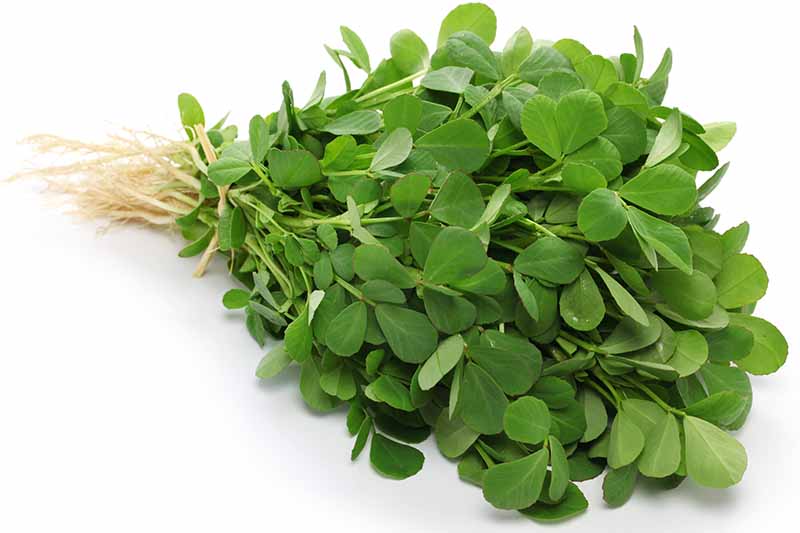
After cutting, leaves will regrow in about 15 days. You can continue to harvest the leaves multiple times until the plant begins to flower.
When the plant bolts and begins seed production, leaves will become tough and bitter.
Seed harvest takes a bit more patience. Plan to collect seeds 3-5 months after planting, once the plant has finished flowering, died back, and begun to turn yellow.
The seeds develop within small pods, and each pod contains about 10 to 20 seeds.
Gather the pods by simply snapping them off where they meet the stem, being careful not to tear them as the seeds will scatter everywhere.
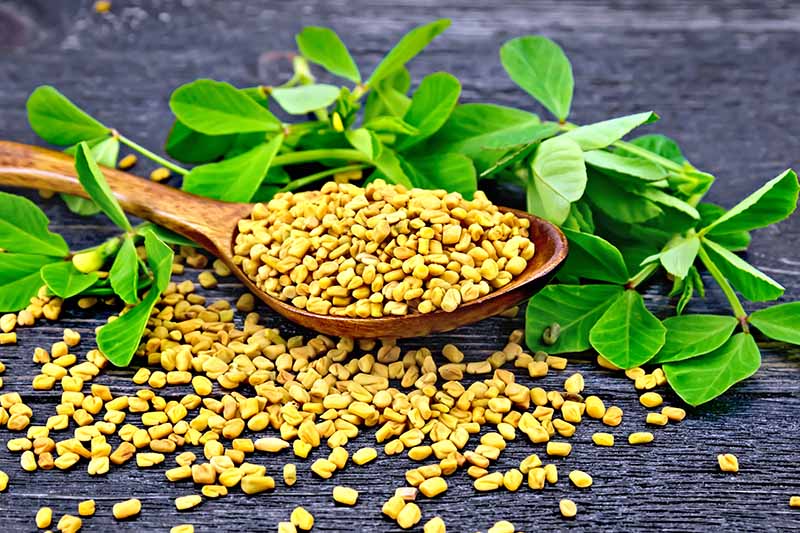
Peel the pods open to reveal the yellow-brown seeds inside. You can also rub them between your palms to break them open, or place them in a bag and rub vigorously to separate the seeds from the pods.
Store seeds in an airtight container in a cool, dry, dark place and theyll remain viable for 2-3 years. You can also use them as a spice in your cooking.
Preserving and Storage
Fresh leaves will keep for up to a week if you remove them from the stalks, wrap in a paper towel, then place in an airtight container in the refrigerator.
Leaves can be used fresh or dried as an herb in cooking or tea. To dry the leaves, hang stems upside down in bundles in a dark, dry location. You can also dry them in a dehydrator or in your oven on the warm setting.
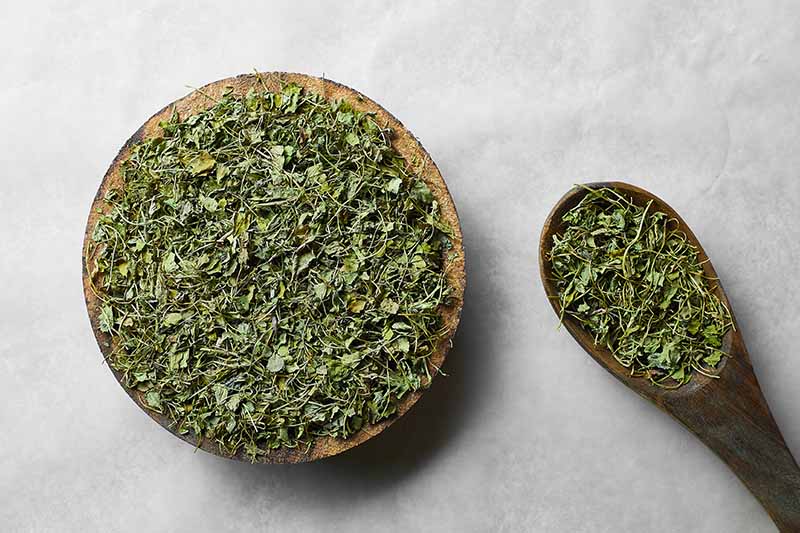
Once thoroughly dried, remove leaves from the stems and store in a tightly lidded glass jar in a dark pantry.
You can also freeze the fresh leaves for up to 10 months. Take the leaves off the stems, roughly chop them and wrap loosely in aluminum foil, then put the foil parcel into a Ziploc bag in the freezer.
When youre ready to use them, just remove from the foil, wash, and get cooking!
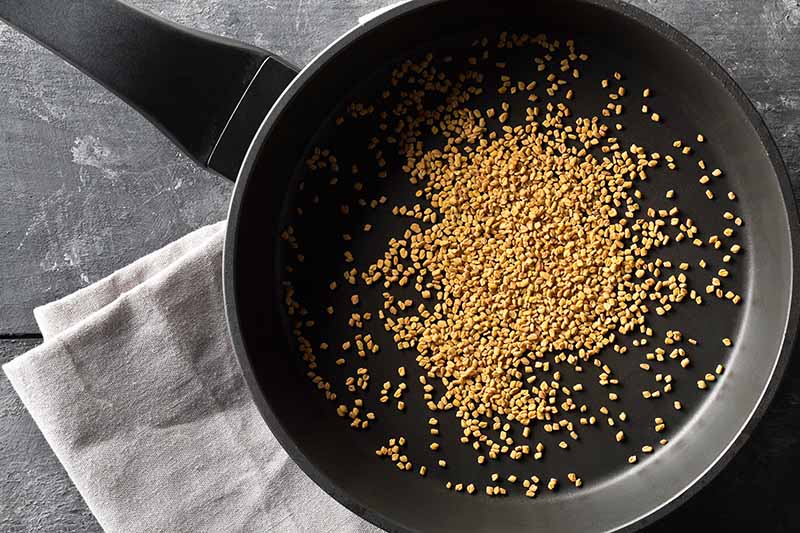
If youre using the seeds as a spice, many people dry roast them to enhance their nutty flavor and aroma. Just roast seeds on medium-high heat for one to two minutes, stirring frequently to prevent burning.
Be cautious not to over roast, or they will become intensely bitter.
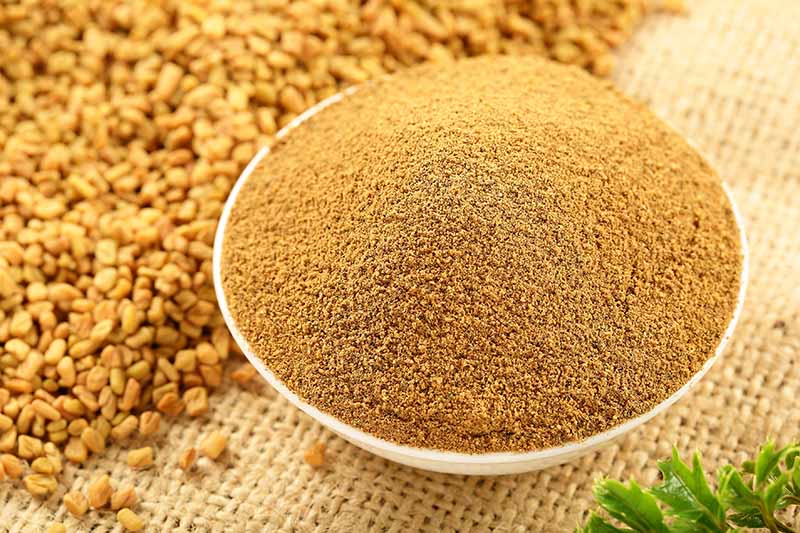
You can also grind the seeds for use in cooking. But theyre tough, so this is going to require some extra prep. You wont have much luck with a mortar and pestle! Heres how to do it:
- Soak seeds overnight in water. Drain, and pat dry with a paper towel or leave to dry.
- Heat a pan over medium heat, add seeds, and stir. Roast them until their color deepens.
- Add them to a spice or coffee grinder, and crush them into a powder.
- Dried or powdered seeds will keep for about a year if stored in an airtight container in a cool, dark place.
Cooking Ideas
With a spicy, peppery aroma and a sweet and sour taste somewhat similar to maple syrup, fenugreek has a distinctive flavor that is delicious in all sorts of dishes.
This herb can be consumed fresh or dried. The seeds can be ground and used as a spice. Some people even like to eat fenugreek sprouts and microgreens. The leaves make a delicious addition to roti or paratha dough.
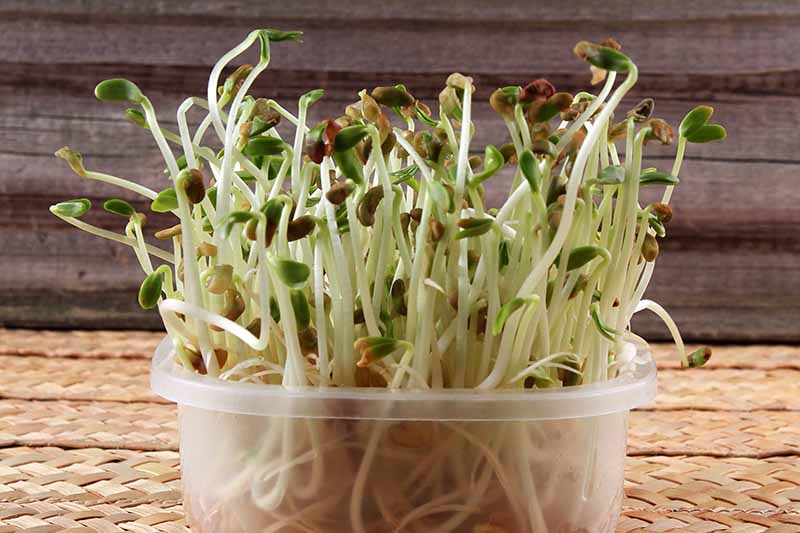
Popular in Asian and Middle Eastern cuisine, the seeds are used as a spice in many traditional recipes. Throw a dash of fenugreek powder into your next coconut curry, or sprinkle it on roasted potatoes.
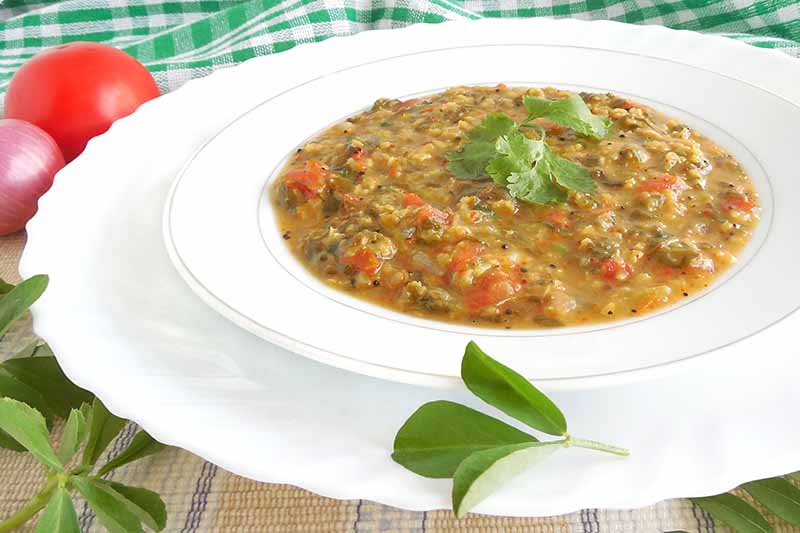
You can toss some of the toasted seeds on your salads, or add them to a pickle brine. In terms of flavor profile, it blends amazingly with cumin and coriander!
Quick Reference Growing Guide
Grow Your Own Spice Rack
Medicinal, delicious, soil building, and beautiful, this one of a kind legume really has it all!
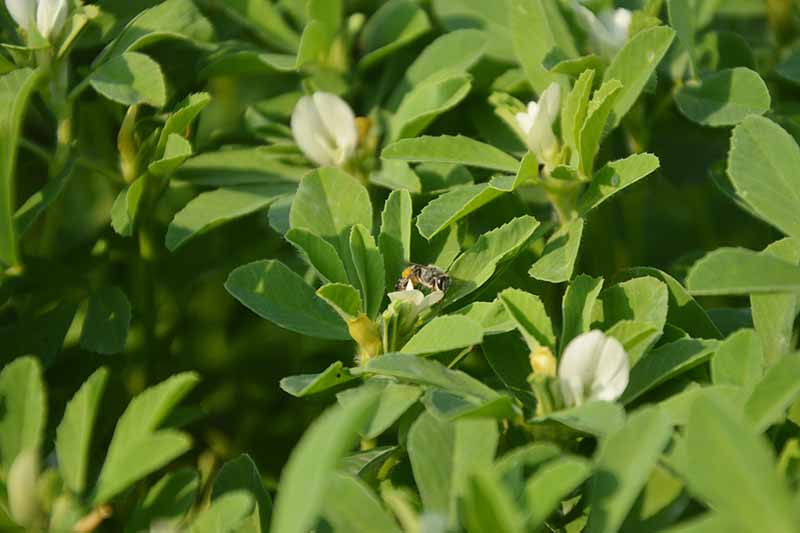
Try incorporating it in your garden lineup this season, and impress your friends with a flavorful homegrown herb and spice that may be new to them.
Have you tried growing fenugreek? Tell us all about it in the comments below!
If you found this guide valuable, give these a read next:
- How to Grow Flavorful Cardamom in Your Home Garden
- How to Grow and Use Epazote Herb
- How to Plant and Grow Ginger in Your Home Garden
Ask the Experts, LLC. ALL RIGHTS RESERVED. See our TOS for more details. Product photos via Eden Brothers, True Leaf Market, and Storey Publishing. Uncredited photos: Shutterstock. Additional writing and editing by Clare Groom and Allison Sidhu.
The post How to Grow Fenugreek appeared first on Gardener's Path.

